Archive
Forskare har hittat en förklaring till varför högintensiv träning i korta intervaller är så effektiv. – Cellen måste förstå att den har ett problem, säger forskare.
Högintensiv träning i kortare intervaller gör att muskler blir mer uthålliga, och forskare vid Karolinska institutet kan nu förklara varför.
– Det vi har sett är att under träningen så startas signalering som gör att man bryter ner kalciumkanaler, det gör att mängden kalcium ökar i muskelcellerna. Det är i sin tur ett utmärkt sätt att dra igång alla förändringar som krävs för att muskelcellerna ska bli uthålligare, säger Håkan Westerblad, en av forskarna bakom studien.
För att undersöka vad som händer i muskelcellerna lät forskarna manliga motionärer cykla så intensivt som möjligt under 30 sekunder. Sedan fick de vila i fyra minuter innan det var dags igen. Och så höll det på, i upp till sex gånger.
Därefter tog forskarna prover från männens lårmuskler, och det visade sig att cellens struktur förändrats.
– Det vi tyckte var konstigt är hur tre minuters stenhård träning kan ha bättre effekt än det vanliga, att man är ute och springer i en timme eller så. Att träna hårt i tre minuter måste ju då orsaka någonting inne i muskelcellerna som de känner igen lång tid efteråt och kan anpassa sig till, säger Håkan Westerblad.
Fria radikaler en viktig komponent
När kalciumkanalerna bryts ner så läcker kalcium ut i cellen, och det får cellen att börja bilda olika proteiner, bland annat till cellens ”kraftverk” mitokondrierna.
Mitokondrier producerar energi och sedan tidigare vet man att förändringar som stimulerar nybildning av mitokondrier ökar musklernas uthållighet.
– All träning går ju ut på att muskeln anpassar sig till ett problem, men då måste den ju förstå att den har ett problem till att börja med. Och här är kalciumläckaget problemet, säger Håkan Westerblad.
Orsaken till att kalciumkanalerna bryts ner är att mängden fria radikaler ökar, något som kan förklara varför intag av antioxidanter kan försämra effekten av uthållighetsträning.
– Vad vi ser är att det är stenhård träning som ger en dusch av fria radikaler som i sin tur förstör eller bryter ner kalciumkanalerna, och det triggar träningseffekten. Tar man bort de fria radikalerna med hjälp av antioxidanter så blir kalciumkanalerna inte påverkade och så får man kanske ingen träningseffekt, säger Håkan Westerblad.
Men det finns också risker med att träna allt för hårt.
– Lite kalciumläckage är bra och kan trigga träningseffekter. För mycket kalciumläckage gör att muskelcellerna på något sätt känner av att ”det här fixar jag inte” och då stänger de av sig själva istället. Då finns risken att musklerna blir svagare, säger Håkan Westerblad.
Studien publiceras i tidskriften PNAS.
Av Martin Norum
03. januar 2012, 08:00
Pullupsguide
Viktigheten av å benytte baseøvelser i treningsprogrammer kan ikke understrekes nok. I en perfekt verden der skader ikke er noe problem og tekniske ferdigheter er på plass vil effekten av markløft alltid være større enn rygghev.
Og knebøy vil alltid være bedre enn benpress. Alle øvelser har sin plass og kan benyttes for variasjon, men du henger sikkert med på poenget. Pullups kan ses på som overkroppens knebøy. I denne artikkelen skal vi se på hvordan du kan jobbe progressivt mot pullup-suksess!
shutterstock_46653994.jpgDet mest vanlige alternativet til pullups er nedtrekk. Den finnes i maskin, med kabel og med benstøtte som dytter deg oppover. Med alle de nye fancy apparatene som finnes idag er det nesten ingen som gjør de gode gamle (og mest effektive øvelsene lenger). At apparatene ser flotte ut gjør de ikke til effektive og nyttige når resultater skal fremdrives så fort som mulig. Jeg er ikke motstander av vanlige nedtrekk, det er bare at de gir deg mindre tilbake for strevet du legger ned i trening(så fremt du klarer å utføre pullups), på samme måte som triceps-press med kabel gir deg mindre tilbake sammenlignet med benkpress med smalt grep eller dips. Velg pullups fremfor nedtrekk av følgende årsaker.
pullups fremfor nedtrekk av følgende årsaker.
1. Effekten av øvelsen er langt større – å løfte sin egen vekt opp over stanga gir bedre stimulering av muskelfibrene enn å løfte den samme vekten ned mot kroppen.
2. Øvelsen er mentalt tøffere – Bruk alle anledninger til å treningen så tøffe som mulig så lenge teknikken tillater det. Mental tøffhet må ikke undervurderes
3. Øvelsen er utfordrende og morsommere å gjennomføre enn nedtrekk
Før vi ser på effektive progresjoner mot pullups – ikke glem at du må gjøre andre øvelser enn bare pullups(som utføres i det vertikale planet) for å bli virkelig sterk. Med andre ord er det viktig å ha med støtteøvelser som kan underbygge progresjon der du ønsker fremgang. For ryggen er følgende øvelser smart å ha i programmet mot ditt mål om bedre pullup-styrke.
– Markløft
– Foroverlent roing med stang
– En-arms roing over benk
– Baseøvelser for biceps
Det er på tide å lære pullups!
La oss starte med å avklare en ting. Pullups = overhåndsgep. Chins = underhåndsgrep. Vær klar over at øvelsene er vidt forskjellige og stiller ulike krav til muskelaktivitet og tekniske punkter. Progresjonene vist under kan brukes for begge øvelser.
1. Retraksjon av scapula(skulderbladet) fra heng
Det første vi må gjøre er å styrke musklene som trekker skulderbladene sammen. Heng med strak kropp fra stangen og trekk skulderbladene mot hverandre før du slipper tilbake. Når du får til 3 set X 10 rep er du klar til steg to. En del personer sliter med denne bevegelsen grunnet dårlig kontroll av hvordan skulderbladene beveger seg.
2. Pullups med strikk
Ved hjelp av en strikk klarer de fleste å få til noen repetisjoner. Strikker hjelper mest i bunnposisjonen fordi de strammer seg, men gir etter på vei opp. Etter undertegnedes syn er bruk av strikker et bedre alternativ enn pullup-maskinen som gir benstøtte. Med strikk kontrollerer du bevegelsen selv og får følelsen av hvordan en ordentlig pullup skal kjennes på kroppen. Ved vanlige pullups og chins må du faktisk rotere kroppen rundt stangen, og dette krever mye mer innsats og bruk av flere muskler. Med benstøtte er bevegelsesbanen låst og effekten er dårligere. I tilfeller der stor overvekt er et problem, og strikker ikke er tilstrekkelig hjelp kan likevel pullups med benstøtte være et fint alternativ.
Gjør slik: bygg deg opp til å klare ca 8 repetisjoner med en fast strikk du bruker hver gang du trener øvelsen. Når du klarer 8 stykker legger du på vekt. Mange synes det er rart å legge på ekstra vekt i et belte når man bruker strikker for å gjøre øvelsen lettere. Det kan kanskje se rart ut, men for å bli bedre må belastningen økes. Start med 2,5 kg ektra vekt i beltet og økt 2-5 kg hver gang avhengig av hvor tungt det er. Jobb progressivt fremover til du har 10-15 kg hengende i beltet og klarer 1-3 repetisjoner. Når du får til dette er du klar for neste punkt.
3. Isometriske hold
Når du mestrer tunge repetisjoner med strikk er det på tide å gå løs på øvelsen uten ekstra utstyr. Neste progresjon går ut på å holde en statisk/isometrisk posisjon i et gitt antall sekunder.
Det er tre forskjellige punkter du bør holde fokus på:
– Toppen av øvelsen(haken over stangen)
– Midten av øvelsen(ca 90 graders vinkel i albueleddet)
– Nederste del av øvelsen(ikke strekk fullstendig ut, men hold en liten knekk i albuen)
Klem skulderbladene hardt sammen og hold kroppen helt stødig og kontrollert i 5-8 sekunder i hver posisjon.
4. Eksentrisk trening
For å øke pullups-styrken bør belastningstiden følges bevisst. Etter de forrige progresjonene er fortsatt noen ikke sterke nok til å trekke sin egen kroppsvekt opp med haken over stangen. Har du imidlertid klart progresjonene så langt, er du garantert sterk nok til å trene på den eksentriske fasen. Fasen på vei ned. Du er sterkere på vei ned enn på vei opp, hvilket betyr at dette er veien å gå når styrken skal utvikles raskt. Gjør slIk: start med haken over stangen og hold igjen ALT du makter og har. På sikt bør du klare å holde igjen i 20 sekunder på vei ned. Det er samme tempo som i klippet under. Sikt på 3 serier med 2 repetisjoner.
5. Din første pullup!
Hvis du ikke allerede har klart en pullup vil du være i stand til det nå. Når du først har fått til en er veien videre temmelig enkel. For å fortsette å øke er det mange ting som kan gjøres, men en enkel måte å få til 2,3, 4 og fler er å trene mye på øvelsen. Øk volumet og prøv å få til f.eks 10 stykker i samme treningsøkt. Gjør øvelsen når som helst – mellom serier med andre øvelser eller som enkeltøvelse. Når du begynner å få til fler repetisjoner etter hverandre kan du begynne å trene et høyt antall serier(4-8) med få repetisjoner(2-4). Legg gjerne på ekstra vektbelastning i et vektbelte mellom bena slik videoen under illustrerer. Øk alltid belastningen fra økt til økt – enten i form av tyngre vekter eller flere repetisjoner.
Tunge singler er en effektiv måte å komme videre på. Forvent gode resultater når det gjelder styrke og muskelmasse i hele overkroppen.
Hvis du ikke allerede har klart en pullup vil du være i stand til det nå. Når du først har fått til en er veien videre temmelig enkel. For å fortsette å øke er det mange ting som kan gjøres, men en enkel måte å få til 2,3, 4 og fler er å trene mye på øvelsen. Øk volumet og prøv å få til f.eks 10 stykker i samme treningsøkt. Gjør øvelsen når som helst – mellom serier med andre øvelser eller som enkeltøvelse. Når du begynner å få til fler repetisjoner etter hverandre kan du begynne å trene et høyt antall serier(4-8) med få repetisjoner(2-4). Legg gjerne på ekstra vektbelastning i et vektbelte mellom bena slik videoen under illustrerer. Øk alltid belastningen fra økt til økt – enten i form av tyngre vekter eller flere repetisjoner.
Tunge singler er en effektiv måte å komme videre på. Forvent gode resultater når det gjelder styrke og muskelmasse i hele overkroppen.
 If you’re short on Breakfast, don’t like cooking or want to stay in ketosis without chewing on sticks of butter, Bulletproof Coffee is your answer.
If you’re short on Breakfast, don’t like cooking or want to stay in ketosis without chewing on sticks of butter, Bulletproof Coffee is your answer.
This coffee guide has everything you need to become a lean, mean low carb machine:
- Make 12 Perfect Bulletproof Coffee Recipes
- Avoid 6 Big Bulletproof Mistakes (These matter!)
- Bulletproof Coffee Intermittent Fasting Plan
Bulletproof coffee is an upgrade for your regular cup of Joe. Healthy fats are blended and frothed into richly brewed coffee, resulting in a cup of coffee satisfying enough to double as a morning meal.
Bulletproof Coffee is about 97% fat and made from three basic ingredients: Grass-fed butter, MCT oil (Medium Chain Triglyceride) or coconut oil and organic coffee beans.
Why Drink Bulletproof Coffee?
This new-and-improved version leaves you full, focused and energized for hours, crash-free – guaranteed. Low carbers have many reasons besides weight loss for drinking Bulletproof Coffee.
Health benefits of Bulletproof Coffee include:
- Helps you stay in ketosis
- Accelerates fat loss
- Promotes muscle gain
- Boosts brain power
- Increases mental clarity
- Bumps up energy levels
How To Make Perfect Bulletproof Coffee
Bulletproof Coffee is popular for a reason. This high fat low carb coffee is rich, frothy and tastes awesome.
Here’s a simple version of how to make basic Bulletproof Coffee.
Perfect Bulletproof Coffee
Ingredients
- 2 tbsp unsalted grass-fed butter (like Kerrygold)
- 1-2 tbsp of MCT oil or coconut oil
- 2 cups hot freshly brewed organic coffee
- add-in spices, flavors or sweetener like Splenda (optional)
Instructions
Brew coffee. This can be espresso, drip, french press, etc.
Pre-heat blender. Pour hot water into your blender while your coffee is brewing.
Blend and froth. Empty the hot water from the (now preheated) blender. Add coffee, butter and MCT or coconut oil.
Blend until there is a thick layer of foam on top like a latte. Yes, you can use a hand-held blender.
Add extras: cinnamon, vanilla, dark chocolate, flavored sugar-free syrups or sweetener.
6 Big Bulletproof Mistakes
The recipe for Bulletproof Coffee is carefully designed. However, someBulletproof Coffee recipe changes will lower its positive effects.
Don’t make these Bulletproof Coffee mistakes:
1. Not all coffee is equal. The wrong coffee (those containing mycotoxins) will zap your energy, leaving you lethargic and irritable. Choose organic coffee to avoid chemicals.
2. Only use grass-fed butter like Kerrygold. Butter from grain-fed animals has a different fat composition. It doesn’t blend as well, doesn’t taste as good, and lacks fat soluble vitamins (which is one of the reasons this coffee is ‘bulletproof’). Don’t use low-fat or butter substitutes!
3. Butter alone does NOT make your coffee Bulletproof. The MCT oil in your Bulletproof Coffee promotes high energy, fat loss and increases brain function. It also makes the coffee have a better feel in your mouth.
4. Don’t use Bulletproof Coffee as a meal replacement. Bulletproof Coffee is very filling, so this will be tempting. A few times a week is acceptable, but replacing a meal means you’ll be missing out on vital nutrients and protein.
5. Blend, blend, blend… or it won’t taste the same. Stirring won’t emulsify your Bulletproof Coffee. To get that rich, creamy texture you MUST use a blender.
6. If you must add a sweetener, use xylitol, erythritol or stevia. Use caution when adding sugar-free flavored syrups. The extra carbs add up quickly and may act like sugar for some low carbers.
12 Bulletproof Coffee Recipes
Bulletproof Coffee recipes are in demand for several reasons: amazing taste, that ‘full-but-lean’ feeling, greater focus and added energy.
Print or save all 12 Bulletproof Coffee recipes in one easy eBook.

(Opens in a new window.)
Basic Bulletproof Coffee Recipe
Ingredients
- 1 cup hot freshly brewed organic coffee
- 1 tbsp grass-fed butter
- 2 tbsp coconut oil or MCT oil
Instructions
Combine all ingredients in a blender.
Mix for one full minute to completely emulsify.
Enjoy on an empty stomach, before your breakfast.
Gingerbread Spiced Bulletproof Coffee
Ingredients
- 1 tsp gingerbread spice per 2 tbsp of coffee grounds
- 1 tbsp of grass-fed butter
- 1 tbsp of coconut oil or MCT oil
Instructions
Sprinkle the gingerbread spice mix into the coffee grounds. Brew the coffee using your preferred method.
Pour hot coffee into a blender. Add grass-fed butter and coconut oil, plus any extras like sweetener if preferred.
Blend for 30-60 seconds until frothy and creamy.
Sprinkle with extra gingerbread spice, or use Chai tea instead of coffee.
Pumpkin Spice Bulletproof Latte
Ingredients
- 2 tbsp grass-fed unsalted butter
- 2 tbsp coconut oil or MCT oil
- 1 cup unsweetened coconut milk
- 1 cup strong, brewed coffee, cooled
- 1/3 cup organic pumpkin puree
- pinch of salt
- cinnamon, to taste
- nutmeg, to taste
- whipped coconut cream (optional)
Instructions
For the unsweetened coconut milk, scoop the solids off of the top of the can before measuring out a cup of the remaining liquid. Whip the solids for a topping, if desired.
In a blender, combine the coconut milk with the coffee, pumpkin puree, salt, cinnamon and nutmeg. Blend until smooth. Taste and adjust the seasonings, as needed.
Fill two tall glasses about 2/3 of the way with ice cubes. Pour half of the mixture into each glass. Garnish with whipped coconut cream and a sprinkle of cinnamon. Serve immediately.
Bulletproof Coffee Drops
Bulletproof to go! Easy drops make any hot beverage instantly Bulletproof. (Recipe from Stalkerville.)
Ingredients
- 1/2 stick grass-fed unsalted butter
- 1 cup coconut oil or MCT oil
- 1/2 tsp cinnamon
- 1/4 tsp sea salt
Instructions
Combine butter with the melted coconut oil, sea salt and cinnamon.
Whisk and pour into an ice-cube tray.
Freeze and remove and pop the drops into a glass container and cover. Store in the fridge until you are ready to use.
To make Bulletproof Coffee, place one of the cubes and 10 oz of hot coffee of your choice in a blender and blend until well combined and foamy. Drink and enjoy!
Bulletproof Hot Cocoa
Ingredients
- 1/2 cup filtered water
- 1/2 cup full-fat coconut milk
- 2 tbsp grass-fed unsalted butter
- 1 tbsp coconut oil or MCT oil
- 2 tbsp raw cacao powder (or regular cocoa powder)
- 1/4 tsp vanilla extract
- dash cinnamon
Instructions
Bring the water and coconut milk to a boil a small saucepan.
Mix boiling liquid with all other ingredients in a small mixing bowl.
Blend with a blender or hand mixer until frothy.
Transfer the Bulletproof hot cacao to your favorite mug and drink up!
Bulletproof Green Tea
Ingredients
- 2-3 teabags organic green tea
- 2 tbsp grass-fed unsalted butter
- 2 tbsp coconut oil or MCT oil
- 1 tbsp heavy cream
- 3 cups ice cubes
Instructions
Brew your favorite cup of tea using twice the number of teabags.
Add coconut oil and butter, blending well until frothy.
Chill the tea in the freezer for a few hours.
In a blender, add ice cubes and tea.
Blend for 3-5 minutes, until well incorporated.
Bulletproof Coffee Gummies
Bulletproof to go! Portable energy shots with the added benefit of grass-fed gelatin.
Ingredients
- 1 cup hot fresh brewed organic coffee
- 1 tbsp grass-fed butter
- 1 tbsp coconut oil or MCT oil
- 1 tbsp organic vanilla extract
- 5 tbsp grass-fed gelatin
- sweeten to taste with stevia or Splenda
Instructions
Blend all in your blender until mixed well and frothy.
Pour into candy molds and put in the fridge until set (20 minutes to 2 hours).
Pop out of molds and store in a container. When you are ready, drop them into your coffee or eat them whole!
Bulletproof Ice Cream
Ingredients
- 4 whole eggs plus 4 yolks (pastured of course)
- 2 tsp pure vanilla
- 10 drops apple cider vinegar or lime juice
- 1 tbsp coconut oil or MCT oil
- 1 tbsp grass-fed unsalted butter
- 1 cup brewed organic coffee
- 1 tbsp cocoa powder
- 1 packet Splenda
- 1/2 cup water or ice
Instructions
Blend everything but the water/ice in blender.
Add water or ice and blend some more. Ideally, you want a yogurt-like consistency for a creamy ice cream. Add more water for a firmer, icy texture.
Pour the mixture into an ice cream maker and turn it on.
This will make perfect consistency ice cream.
Bulletproof Cocoa Mousse
Ingredients
- 1 tbsp coconut oil or MCT oil
- 1 tbsp grass-fed unsalted butter
- 1 cup brewed organic coffee
- 1-2 tbsp cocoa powder
- 3 tbsp unflavored gelatin
- 1 packet Splenda
Instructions
Add all ingredients to a blender.
Blend until frothy.
Pour into a bowl and set in the fridge for 3 to 4 hours.
Serve with whipped cream or as is.
Bulletproof Coffee Strawberry Cream Pops
Ingredients
- 1 tbsp coconut oil or MCT oil
- 1 tbsp grass-fed unsalted butter
- 1/2 cup fresh strawberries
- 1 egg white
- 1 cup brewed cooled coffee
- 1 tbsp cocoa powder
- 1 packet Splenda
Instructions
Blend fresh strawberries in the food processor until smooth. Add brewed,cooled coffee and cocoa powder. Set aside.
Prepare a pot of hot water for a double boiler.
Place the egg white and sweetener in to a metal bowl in the double boiler.
Beat the egg white mixture until the mass is stiff, glossy and silky.
Remove from double boiler and place egg whites into a new bowl. Add small pieces of room-temperature butter, making sure the last piece added is fully integrated into the mix before adding more.
You will finish with a creamy, yellowish butter cream.
Add the strawberry-coffee-cocoa mixture and whisk (or use an electric mixer) until well combined.
Pour into popsicle molds. Place in the freezer for an hour until set.
Bulletproof Coffee Packs to Go
Bulletproof to go! Bulletproof mocha coffee in bulk for travel and fast morning coffees. (Recipe found on Imgur.)
Ingredients
- 1 pound grass-fed unsalted butter
- 20 tbsp coconut oil
- 1/2 cup – 1 cup cocoa, to taste
- cinnamon (optional)
Instructions
Add all ingredients to a mixing bowl and whisk until smooth. No lumps!
Pour into 20 small cups to make the fat packs. Add lids and refrigerate.
Make your coffee. Place a fat pack to your empty cup or mug.
Add coffee until the cup is half full. Add any sweetener or Torani sugar-free syrups.
Mix with a blender or frother. Add remaining coffee and enjoy.
Bulletproof Pumpkin Frappuccino
This recipe makes 2 small or 1 large frappuccino.
Ingredients
- 1 1/2 cups cold coffee
- 1 1/4 cups unsweetened vanilla almond milk
- 1/4 cup pumpkin puree
- 4 packets Splenda or other sweetener
- 1 tsp ground cinnamon
- 1/4 tsp ground cloves
- 1/4 tsp ground nutmeg
- heavy cream (optional)
Instructions
Brew the coffee, pour into a large mug and refrigerate overnight. Your coffee must be very cold.
In a small bowl whisk the milk, pumpkin, sweetener, cinnamon, cloves and nutmeg until well combined. Pour into ice-cube trays and freeze.
Once coffee pumpkin ice cubes are frozen, add to a blender or food processor. Blend on high until smooth and icy. Add more cream to reach your desired texture.
Top with whipped cream, if desired and serve immediately.
What Is Bulletproof Intermittent Fasting?
Bulletproof Coffee Fasting is like intermittent fasting, except you are consuming Bulletproof Coffee recipes in the morning.
What makes Bulletproof Fasting so much better?
- Healthy fat from grass-fed butter and MCT oil provides a stable current of energy, sustaining you through the entire day.
- The MCT oil also increases ketosis, boosting your metabolic rate by up to 12%.
- MCT found in coconut oil leads to greater losses of fat tissue.
- Coffee raises cell energy while inhibiting muscle-building for a brief period, . This causes the muscles to ‘spring back,’ building even more muscle as soon as you eat.
- Bulletproof Intermittent Fasting extends your life, improves brain function, and strengthens your immune system.
Step-by-Step Bulletproof IF Plan
The goal of intermittent fasting with Bulletproof Coffee recipes is to improve and/or sustain mental performance by adding more nutritional benefits than plain intermittent fasting.
Step 1: Eat dinner by 8 pm.
No snacking after dinner! Go to sleep when you want – that’s your business.
Step 2: Drink Bulletproof Coffee.
Drink as much Bulletproof Coffee as you like in the morning. You may drink another cup before 2:00 pm if you are hungry, but NO COFFEE after 2:00 PM!
Step 3: Work out.
This is not necessary to gain muscle and lose fat, but it helps. Try high intensity weight training. Shorter and harder is better than longer exercise. You will need to sleep more if you exercise.
Step 4: Do not eat until 2:00 pm.
This means you’ve only consumed Bulletproof Coffee for the past 18 hours. If 18 hours is too long, begin with a shorter, 10-12 hour fast and increase from there.
Step 5: It’s 2:00 pm – Eat!
Eat high fat low carb meals or snacks during the next 6 hours (until 8:00 pm). If you’re hungry, eat!
Still Hungry? (Or Thirsty?)
Transform your Bulletproof Coffee into an artistic masterpiece with thishow-to coffee foam design video.
Learn about more health benefits and why adding coffee to your diet helps you lose more weight.

If you know anything about me, it’s probably that I’m a calisthenics fanatic. This means I absolutely hate anything involving barbells or other external loading, right? Think again!
I’d be lying if I tried to tell you that the bench press isn’t a fantastic exercise. In fact, for many years, bench presses were a cornerstone of my training. Though bodyweight training is my main modality these days, I can still recognize the benefits of pushing a loaded barbell.
That said, I thought it might be beneficial to compare the two movements side by side to see which one deserves to be a higher priority. Let’s take a closer look at some of the pros and cons of the barbell bench press and the push-up, two of the all-time pec-blasting classics!
APPROACHABILITY PUSH-UP WINS
We all know the most obvious advantage of a barbell: the ability to gradually add a few pounds at a time, letting you track your progress incrementally. Keep track of the number, and you’ll always have an answer to the age-old question, “How much ya bench?”
But that advantage is also a disadvantage. The numbers game that accompanies bench pressing keeps many people who don’t have an answer to that question from getting under the bar—and maybe even from trying to get stronger at all. Maybe they just don’t want to get into the chest thumping that often goes along with the number, or they’ve just heard too many war stories about the injuries.

So let me put this out there: I don’t care how many push-ups you can do. Few people do! I only care how good your push-ups are—and I’m confident that, pretty much whomever you are, I can teach you to do a few good ones.
Sure, you could keep adding more push-ups to gauge your progress, but at a certain point, you’ll need to find harder variations if you want to build raw strength instead of strength endurance. This demands a certain degree of creativity. It also demands a willingness to feel like a beginner again the first time you try (and fail) at a move like, say, an archer push-up.
That’s not a downside to me, though. I love new challenges!
FIVE ADVANCED PUSH-UP VARIATIONS
WATCH THE VIDEO – 1:16
SIMPLICITY AND PORTABILITY PUSH-UP WINS
This isn’t important for everyone, but for me, it’s a huge draw. The obvious drawback of relying on the bench press as your primary upper-body horizontal pushing movement is that it requires you to have access to a bench, a bar, and a bunch of weights. Unless you have a garage gym, that also means you need access to a gym.
Push-ups, on the other hand, require nothing more than the floor beneath your feet. This is important to me not only because I travel a lot, but also because I prefer to train outdoors in my favorite park. We don’t all have access to weight-training equipment, but if you don’t have any floor or ground under you, you’ve got a serious problem!
Additionally, if you are benching with a weight that is challenging enough to stimulate your muscles to grow bigger and stronger, you’ll eventually need a spotter to ensure your safety. If you fail midway through a rep of the bench press and don’t have someone to help you finish the lift, you may find yourself in a dangerous situation.
Conversely, the worst injury that will happen to you if you fail on a push-up is a bruised ego, which typically does not require medical attention.
STRENGTH GAINS TIE
Here, it really depends on what you consider “strength.” If you want to be able to push as much weight as possible, there’s no better choice than the bench press. While push-ups can help you create greater relative strength, the bench can foster greater absolute strength.

Sure, there are many ways to manipulate the leverage of the push-up to make it more challenging, but if you want to become good at pressing an external load, you need to get under something heavy. The downside to this, unfortunately, is that it’s easy to get caught up in wanting to add as much weight as possible to the bar, which can cause you to compromise your form or chase a certain definition of strength even when your body is screaming for mercy.
Poor form on a heavy bench-press attempt can cause shoulder problems or other issues, particularly over the long term. Push-ups with poor form can be problematic as well, but when your body is your only resistance, there’s not going to be as much shearing force on your joints.
Additionally, the push-up will keep you honest about building pound-for-pound strength. As I explained in “Al Kavadlo’s 20 Pull-up Challenge,” that’s the type of strength that is important to me. If your bench-press numbers are going up, but your push-up numbers are simultaneously suffering, that’s a sign that you are not gaining real, functional strength.
Adding weight to your bench press while adding weight around your midsection means that you are simply improving your leverage to move another object; you aren’t really getting stronger.
VARIETY AND ADAPTABILITY PUSH-UP WINS
If you want to add variety to your bench routine, you really only have a few options, such as switching from a barbell to a pair of dumbbells, taking your grip wider or narrower, or adjusting the incline or decline of your bench.

Push-ups, on the other hand, can be varied in a nearly infinite number of ways. You can adjust your hand position, foot position, and weight-to-limb ratio by elevating your feet to increase the amount of weight on your arms. You can practice push-ups on your knuckles, fingertips, or even the backs of your hands.
You can also make push-ups asymmetrical by practicing single-arm push-up variants to target your weak side and help promote symmetry between both sides of the body. Mixing up your training with different types of push-ups will not only provide mental stimulation, it also will make you better at moving your body through various functional patterns.
MUSCLE ACTIVATION PUSH-UP WINS
I hear you typing, so let me explain.
I’m not going to tell you that the bench press isn’t a great muscle-building movement; history—and a quick walk around any weight room in the country—clearly shows that it is. But if we’re talking about which move activates more muscle around the entire body, the push-up makes a solid case.

When done properly, push-ups will engage your entire core, not just your upper body. This is even more the case in the one-armed variation, which forces you to engage your lats, opposite-side leg, lower back, and glutes, to name just a few. If you don’t get those in the game, you don’t get off the ground—it’s that simple.
When doing a bench press, however, the bench provides stability for your trunk, which means that every muscle in your body other than your pecs, shoulders, lats, and triceps will have relatively little stimulation.
OVERALL WINNER PUSH-UP
So which is the better exercise? I’m going with the push-up, not least of all because it’s something I can do anywhere, anytime. So if you’re only going to do one of these moves, make it the push-up.
Of course, the great thing about this debate is that you don’t have to pick one or the other. Push-ups and bench presses can happily coexist in the same training program, or even within the same workout. You can use the push-up to burn yourself out after doing bench presses, or to warm yourself up prior to getting under the bar. Another approach is to practice push-up variations on some days and bench presses on other days. Mixing up the type of stimulation provided to your muscles can be a good way to continually shock your body into new growth.
If you’ve been stuck in the same place with either exercise for a long time, switching to the other one might be a great way to bust through your plateau. Try this: For the next few weeks or months, put down the bar and set a lofty push-up goal, like busting out 50 strict narrow push-ups, or 5 strict reps of the single-arm push-up. Then go back to the barbell and see how much it carried over.
Experiment for yourself and you will ultimately find a system that works for you and your goals. But whatever you do, don’t skip your push-ups!
Take the Tests, Identify Weaknesses, and Get Better

Focus on what you need to do, not necessarily on what you want to do. That’s the secret to strength training success. But how do you know what you need to do? Easy. Make sure you can do everything on the following checklist. Any shortcomings will shine a bright light on your weaknesses, then you can fix them and get better.
1 – Bench Your Bodyweight
Mastering bodyweight on the barbell is the transition between beginner and intermediate. I’m amazed when people who’ve been training a while still can’t bench bodyweight. Seven-foot tall genetic anomalies with crazy levers aside, the bodyweight bench press is something you should be able to do. For many, it’s a technical issue. For others it’s a problem of variation.
- The technical problem: To be strong, the joints need to stack up on each other. Along with understanding tension, this seems to be a lost fact with many lifters. Some people will bench with a grip that would be perfect for a middle school boy – too narrow. Your elbow should be directly under your wrist while benching. It might take a workout or two to adapt, so have someone “eyeball” your elbows and wrists. They should be basically vertical. This little hint always helps people bench more.
- The variation problem: Keep an eye on how much “stuff” you’re packing into your workouts. Military (overhead) pressing will probably help your bench, but adding inclines, dumbbell presses, flyes and all the extra chest work is often the issue holding you back. Too much is too much, and until you bench at least bodyweight you don’t need the extra stuff.
Now, if you can bench bodyweight, can you also front squat and clean bodyweight? If yes, then can you snatch it? See where we’re going here? Master bodyweight on the barbell, first and foremost.
2 – Deadlift Double Your Bodyweight
This is a basic test, but some might struggle to do this for years. Grip strength, position, tension control and injuries might all conspire against you here.
Here’s the odd thing, most people don’t need to deadlift to improve their deadlift. Pull-ups will help with grip, kettlebell swings will help with hip and glute strength, and high-rep squats can teach tension. I’ve yet to meet a good Olympic lifter that couldn’t pull a big deadlift – without any deadlift training. Getting strong in the fundamentals gets you strong in the deadlift.
Powerlifters may disagree, but the great lifter Hugh Cassidy said that only silverbacks can deadlift more than once a week. So, what do you do the rest of the time? Simply put, “work” increases a deadlift. Push a Prowler, farmer walk, squat heavy for high reps, get stronger. Dedicating three to six months of heavy, hard training without deadliftingwill do miracles for your deadlift.
3 – Hold a Two-Minute Plank
I like the push-up position plank (PUPP) as it challenges the shoulders a bit more and makes it nearly impossible to rest the gut on the ground during the test. It doesn’t matter what plank you do, but can you fight tension for two minutes?
Dr. Stu McGill has said that if you can’t hold a two-minute plank then either you’re obese or your ab training is terrible. Let me add a third: you don’t understand tension.
Now, you can address this shortcoming by practicing the plank. That’s actually a good thing for many people. Learning to crank up the tension is a secret in strength training. Many neophytes simply can’t ratchet up the whole body tension needed for maximal lifting.
There’s another way, too. Pick up a reasonably heavy kettlebell or dumbbell in one hand and walk with it. This suitcase carry is a walking plank and the load is going to teach the body tension while moving. Most people start with at least 50 pounds, but going much over 100 might not help much. You don’t want to wilt like a flower as you walk. Stay tall and strong.

Suitcase carries are simple to add into any training program. For distance, simply go as far as you can with one arm and return with the other. Today, you’ll notice your grip strength. Tomorrow, you’ll notice your obliques.
4 – Sleep With Only One Pillow
How many pillows do you need? If you answer more than one, you need mobility and flexibility work, and maybe even a visit to the physical therapist. Having to prop your head so far forward is a sign you could be dealing with some kyphosis – excessive curvature of the spine causing a hunching of the back.
Vlad Janda taught us half a century ago that the tonic muscles – specifically the pecs, biceps, hamstrings, and hip flexors – tighten with age, injury, and illness. So focus flexibility work there first. If you have joint issues, surgery or rehab might be the correct answer to the problem versus “I’ll just work around it.” If you have massive asymmetries, balancing this out earlier rather than later might be a good way to sleep through the night. Move well, sleep well.
5 – Sit on Floor Without Using Hands, Knees, or Shins
Go from standing to sitting on the floor without any assistance of your hands, knees, or shins, and then get up without putting weight on any other part of your body other than your feet.
This test literally can save your life, and the research bears this out. It gives some insights, statistically, into your life expectancy. (Look up Dr. Araujo at the Clinimex-Exercise Medicine Clinic if you want the details.) It’s also very predictive of long-term flexibility, physical strength, and coordination.
This set of tests will give you a full-body safety check. I call them the “hang on to these as long as you can” standards.
Now, if you’re younger than 50 and struggle with one of these tests, begin thinking about your long-term health and fitness. Basically, something that’s correctable now might not be correctable when you enter the golden years.
6 – Balance on One Foot for 10 Seconds
Stand on one foot for 10 seconds. Failing the stand-on-one-foot assessment might be a sign of a serious problem. For me it was a hip issue.
7 – Hang for 30 Seconds, Pull-Up
Hang from a bar for 30 seconds. Aside from grip strength, the hanging test might highlight some shoulder and spinal issues.
Can you do that easily? Good. Now try this: Hang from the bar for thirty seconds. When the timer rings, do a pull-up. If you can do that, you’re not too bad. Now let’s ramp it up. Without letting go, drop back down and hang for another thirty seconds and do a second pull-up. For the true crazies, let’s see who can do 10 of these 30-second hang pull-ups. Few can. Gripping is the weak point for most lifters.
8 – Long Jump Your Height
Every athletic person should be able to do a standing long jump for as far as they are tall. And besides, if there’s a rattlesnake in your path, that jump will clear you from danger. If you can’t do it, just start practicing it. That’s all most people need to do to get back to this standard and stay there.
9 – 30-Second Bodyweight Squat and Hold
Squat down, hold 30 seconds, and then stand up without using your hands. This gives you a general insight into your lower body health.
10 – Farmers Walk Your Bodyweight
Farmers walk your bodyweight for a few steps. If the zombie apocalypse does happen, the farmers walk test will help you move your stuff. And of course it also shows that you’re reasonably strong in a “functional” manner, have decent conditioning, and you’re not too fat.
Related: The Posture Cure
Related: 9 Tips for Dedicated Lifters

Every day, you wake up with a frontal cortex fully charged with willpower (provided you are getting plenty of good, quality sleep!). How you apply that willpower over the course of the day can largely be affected by that first 30 minutes of your morning.
Here’s one way someone might start her day: You wake up, and while still in bed, reach for your smartphone and start scrolling through email. Then do a quick social media scan, check the Instagram and Facebook posts, and then maybe you check out a news site or two. Finally you get out of bed, go make coffee, flip on the TV, and eat a high-sugar breakfast while you watch a morning talk show.
While you do all this, you also warily try to make decisions about what you need to get done during the day. This energy spent on weighing decisions directly drains your willpower reserves. Also, you scold yourself for not having exercised the day before, further exhausting your willpower reserves. You then shower, dress, and hit the morning traffic.
I have a better option for you. Below is an outline I developed while serving in Iraq, in 2004. Despite the environmental stress that comes with being in a combat zone, I was able to start my day energized, focused, and feeling great, with a full reservoir of willpower to spend on the decisions and actions I needed to survive and accomplish my mission as a Navy SEAL leader during wartime. Here are the six steps to developing and following this power ritual:
1. Find a calm space.
Each morning, wake up and go to a place where you can be alone and settle into a space of sacred silence. This space is ideally separate from your bedroom but can be any place where you have privacy.
2. Hydrate to fuel your body.
Start your day by drinking a glass of fresh, filtered water.
3. Take just a few minutes to reflect.
Think about your personal ethos and establish positivity through gratitude.Use your journal for this and reflect on questions like these:
- What and for whom am I grateful for?
- What am I excited about and looking forward to doing today?
- What is my purpose and do my plans for today connect me to it?
- Who can I reach out to and serve, or thank, today?
4. Focus on your breathing for at least five minutes.
I recommend my technique of box breathing. This is a discipline I teach at my SEALFIT Academy. It is a practice of deep diaphragmatic breathing, meant to be done in a quiet and controlled setting. To put it simply, you inhale for a count of five, hold for a count of five, exhale for five, and then hold your breath again for a count of five.
5. Mindfully move your body.
I recommend doing a few sun salutations, moving with the breath, or taking a brisk walk on which you remain internally focused.
6. Close the session by “dirt diving” your day.
Review your plan for the day, make any final adjustments, and then visualize yourself going through all the major, important actions planned for the day and dominating each. This prepares your mind for winning.
Now that your internal prep is complete, you are ready to move out. For some of you this will be to have a healthy, paleo-style breakfast, to head to the gym for a workout, or to get the kids off to school. In all cases you are prepared for battle with this morning ritual.
This simple ritual is designed to fit into as little as 20 minutes. If you have more time, great, you could expand the yoga practice to an hour or more. But even if you spend just five or ten minutes and do it consistently each and every day, the results will be life-changing. Sound appealing? There’s no reason you can’t start now.
Photo Credit: Getty Images

After reflecting on the last twenty-plus years that I’ve been involved in fitness as a student athlete, a service member and veteran, and training others to achieve a wide variety of fitness goals, I realize that I’ve learned a thing or two. The two lessons that have had the biggest impact on my overall health and abilities are:
Weight loss begins in the kitchen not the gym.
Periodization is the key to longevity as a healthy person and aging athlete.
OUTWORKING YOUR DIET?
When I first started writing about fitness and training, I was in my late twenties. I spent the previous 15 years as a year-round athlete in high school, then I was an athlete in the United States Naval Academy, and then I advanced into the world of special ops. Up to that point, I was quite certain that you could outwork your diet. Of course, I knew you still had to eat well to gain energy to work hard and train harder.
Perhaps in your teens and twenties, if you put in more than a few hours a day of training, you can. When you are younger and it is difficult to gain weight, you can outwork your diet and still be lean. But as you age, you can look at food and gain weight. Unless you are physically active nearly the entire day, you will likely not be able to burn off the calories you eat, and that causes you to pack on weight every year.
It’s important to eat better by reducing carbohydrate intake and eating more fresh foods like fruits, vegetables, nuts, and berries – they’re great energy sources for you, and are certainly better than high-sugar foods and overdoing the caffeine. Strive to keep it real – no fake foods! See the Lean Down Plan link for ideas and options that can help you eat to lose weight or maintain weight .
Lean proteins and good fats like steak, chicken, and fish in addition to a big salad of green leafy lettuce, nuts, and colorful vegetables and fruits all complement each other to help you get control of your calorie intake. Don’t forget water – replace all sugar drinks with water and watch the weight drop off quickly.
INJURIES CATCH UP TO YOU
The problem with trying to outwork your diet is that as you age, you will start to create overuse injuries as the battle becomes futile.
I had a pretty respectable A-game in my teens and twenties, and when it came to high-level fitness I stayed there year after year after year. Then I turned thirty and it fell apart – injuries compounded on each other, a combination of traumatic sports injuries and overuse injuries caught up to me. An ankle surgery, a shoulder injury, a stress fracture, and several run-ins with tendonitis took its toll. I had to rebuild and get smarter with training.
Since turning 30 years old and becoming smarter with regards to training, studying physiology, and joining the National Strength and Conditioning Association, I went back to how, as an athlete, we trained to be bigger, faster, and stronger for sports season. Periodization was the key. Just like when you would have pre-season workouts, in-season workouts, and post-season workouts for sports, I created a system that worked for me and geared it toward being a Tactical Athlete. Instead of being an out of season athlete, which military personnel, law enforcement, and fire fighters cannot become, we focus on all the elements of fitness broken up throughout the year. New focuses every quarter help me and other tactical athletes maintain all elements of fitness required to do their job, but does not allow for year-long peaking of any element. See how the year is broken down in quarters and you can arrange the focal points to any season that works for you.
Spring Cycle 1st Quarter: Calisthenics and Cardio Workouts
The goal of this cycle is to build a foundation of moderate to high-reps of calisthenics or bodyweight exercises to improve fitness testing scores, but to also burn off some of the bulk you created during the winter weight-lifting cycle. Progressing the running each week is critical to this cycle as well, and will help prevent over-use running injuries when starting back up again. This is a great foundation for everyone when getting into a resistance program.
Summer Cycle 2nd Quarter: Calisthenics and Cardio Workout (Increased Difficulty)
This phase takes the last cycle and builds upon it further with more maximum effort (high rep and high mileage cardio) workouts.Typically at the end of this cycle you will reach a peak in cardiovascular and bodyweight performance. At this point, you will be ready for a change.My error in the past was to keep doing this year after year and adding extra weights to the game. I found separating the two worked well.
Fall Cycle 3rd Quarter: Some Calisthenics, Some Weights, Cardio Workouts
Change your routine a bit now. Decrease reps of calisthenics, but add weights incrementally each week to build up your strength. Adding weight vests to calisthenics is a good way to transition into weighted activities in the gym too. Cardio options grow by adding more non-impact to your decreasing running routine as you taper a bit to prepare for the weight cycle. I have found that it is difficult to maximize running pace in timed runs and lifting heavy at the same time.
Winter Cycle 4th Quarter: Near 100% Weights and Less Running, More Non-Impact Cardio
As a former football player and power lifter, I have always enjoyed this cycle and found that within 4-6 weeks, I was back to old max weight (1RM) in several exercises including bench press, squats, power clean, and dead lifts. Usually weight gain will accompany this cycle and typical results are an additional 10-15 lbs. To prevent the weight gain, you have to work hard in the kitchen as mentioned above. The legs (knees, hips, shins) will feel good on occasional runs after a few weeks of tapering down to more non-impact cardio.
I have been doing this cycle now for over 15 years and it has absolutely been the method that saved my ability to still train hard. Competing in obstacle course races, moderate distance runs, lifting competitions, triathlons and even playing sports can still occur using a system like this vs constantly hammering yourself with the same old butt kicking workouts year after year. In a nutshell, break it up through the year and eat smarter.
Variety is the spice of life – Enjoy the journey. In a nutshell, break it up through the year and eat smarter.
Stew Smith works as a presenter / editorial board with the Tactical Strength and Conditioning program of the National Strength and Conditioning Association and is Certified Strength and Conditioning Specialist (CSCS). There are also over 800 articles onMilitary.com Fitness Forum focusing on a variety of fitness, nutritional, and tactical issues military members face throughout their career.

Here’s what you need to know…
- Tabatas are four-minute intervals of brutal metabolic conditioning.
- They sound simple, but if you’re doing them correctly, you will finish in a state of breathlessness and your lungs will feel like they’re on fire.
- Traditional Tabatas consist of one exercise. Better Tabata options allow you to rotate between multiple exercises.
- Pick the Tabata option that’s right for you, and destroy fat in just four minutes.
Effective Burn. Endless Options.
It’s the most effective way to incinerate body fat and raise your work capacity.
It doesn’t matter what space or equipment limitations you’re facing, the following Tabata options include barbells, kettlebells, resistance bands, or your own bodyweight. Choose your weapon.
But First, a Review: What’s a Tabata?
 If you don’t already know what a Tabata interval is, it’s a high intensity interval training protocol originally created by Japanese researcher Dr. Izumi Tabata.
If you don’t already know what a Tabata interval is, it’s a high intensity interval training protocol originally created by Japanese researcher Dr. Izumi Tabata.
Each Tabata interval consists of 20 seconds of high intensity (as hard as you can go) exercise followed by 10 seconds of rest. This is repeated for eight rounds, totaling four minutes time.
Four Minutes to Freedom
The Tabata method is easy to understand, but it’s not easy to do. Many folks don’t make it through the full four minutes, and others who do often end up puking following the first few workouts.
This is why it’s necessary to gradually progress (periodize) your Tabata training. Below I’ll provide you with both an 8-week and 12-week progression model designed to help you maximize your Tabata training efforts while avoiding excessive fatigue and overtraining.
That being said, progression or no progression, in order to use the Tabata method successfully, you must be willing to work hard!
Fat Loss vs. Conditioning
 There’s almost no difference between fat loss exercises and metabolic conditioning exercises, both should be very intense in nature and demand a total body effort.
There’s almost no difference between fat loss exercises and metabolic conditioning exercises, both should be very intense in nature and demand a total body effort.
The only thing that separates a conditioning program from a fat loss program is the diet. You can improve your endurance and conditioning without going on any special diet. For fat loss, do the same workouts but fix your diet.
Untraditional Tabata Training
Traditional Tabata protocols contain only one exercise, such as squats, and repeating that same exercise throughout the entire Tabata interval. But there are other options:
- Use two different exercises performed four times each.
- Use four different exercises performed two times each.
- Use eight different exercises each performed once within a Tabata workout.
Here’s why the three options beat traditional Tabatas:
- When you only use one exercise such as squats for the entire Tabata, the legs gradually fatigue with each working set. This centralized leg fatigue reduces the overall intensity of the Tabata and its intensity.
- Using more than one exercise prevents centralized muscle fatigue and helps you maintain the same high level of intensity in each round.
- Mixing in more than one exercise boosts the overall metabolic demand because it involves more muscles. Put simply, more muscles worked means greater energy demand, which in turn means faster fat loss.
- Doing the same exercise eight times for four minutes straight is just plain boring. The workout is already brutal, why make it monotonous too?
The Tabata Six

#1 Barbell Tabata Complex (4 Exercises)
Pick four barbell exercises that you can easily transition between.
Perform the first exercise for as many reps as you can in 20 seconds.
Rest 10 seconds.
Perform the second exercise as fast as possible for 20 seconds.
Rest 10 seconds.
Repeat this process for the following two remaining exercises.
Once you’ve completed all four exercises you’re only half way done, because you’ll only be two minutes into the Tabata. Go back to the first exercise and repeat the entire complex again without ever dropping the bar.
Barbell Tabata Complex Example:
1. Reverse Lunge (alternating legs) (rack position)
2. Shoulder Press or Thruster
3. Romanian Deadlift
4. Hang Clean
5. Reverse Lunge (alternating legs) (rack position)
6. Shoulder Press or Thruster
7. Romanian Deadlift
8. Hang Clean
#2 Barbell Tabata Complex (8 Exercises)
This complex is performed exactly the same as the previous complex, only you perform eight different exercises once instead of four exercises performed twice.
Example:
1. Reverse Lunge (barbell on shoulders; back squat style)
2. Good Morning (bar still on shoulders)
3. Shoulder Press or Thruster
4. Hang Clean
5. Front Squat
6. Bent Over Row
7. Romanian Deadlift
8. Push-Up
Note: When performing barbell complexes like the one above, it’s okay not to use “perfect” Olympic lifting technique on moves like cleans and snatches. Why?
- We’re not Olympic lifting, we’re doing a barbell complex.
- We’re not trying to build peak power, we’re trying to build conditioning and lose fat.
- Good Olympic lifting form is needed to help you lift heavy loads as fast and efficiently as possible. The loads used in the complexes above are not heavy at all, and therefore don’t require you to have “perfect” form.
Related: The Truth About Olympic Lifts
As long as you don’t lose optimal spinal alignment and maintain good rhythm, you’re fine.
#3 Kettlebell Tabata Complex (4 Exercises)
 You can swing kettlebells, squat with kettlebells, or thrust them over your head. So pick your favorites and just rotate with 20 second intervals.
You can swing kettlebells, squat with kettlebells, or thrust them over your head. So pick your favorites and just rotate with 20 second intervals.
Example:
20 seconds 1-Arm swing (right arm)
10 seconds rest
20 seconds 1-Arm swing (left arm)
10 seconds rest
20 seconds Front Squat (right arm)
10 seconds rest
20 seconds Front Squat (left arm)
10 seconds rest
20 seconds Push Press (right arm)
10 seconds rest
20 seconds Push Press (left arm)
10 seconds rest
20 seconds 2-Arm swing
10 seconds rest
20 seconds 2-Arm swing
You can also do this same Tabata workout without switching sides each time like this:
20 seconds 1-Arm swing (right arm)
10 seconds rest
20 seconds Front Squat (right arm)
10 seconds rest
20 seconds Push Press (right arm)
10 seconds rest
20 seconds 1-Arm swing (left arm)
10 seconds rest
20 seconds Front Squat (left arm)
10 seconds rest
20 seconds Push Press (left arm)
10 seconds rest
20 seconds 2-Arm swing
10 seconds rest
20 seconds 2-Arm swing
#4 Resistance Band Tabata (8 Exercises)
Resistance bands are simple, versatile, and inexpensive. They may look harmless but don’t be fooled, this will be tough if you’re doing it right.
Example:
1. Squat and Row
2. Swimmers (back straight, arms straight, touch band to shoulders)
3. Tight Rotations (right side)
4. Tight Rotations (left side)
5. Punches (right leg forward)
6. Punches (left leg forward)
7. Swimmers (back straight, arms straight, touch band to shoulders)
8. Squat and Row
#5 Fighter’s Band Tabata (4 Exercises)
This Tabata is a favorite among fighters because it develops the upper-body conditioning necessary to continually throw punches, push, pull, and clinch with your opponent for the entire fight.
Related: HLC: The Ultimate Workout Finisher
It’s also a non-leg dominant way of improving conditioning and accelerating fat loss. Bodybuilders and figure competitors love this Tabata after an upper-body lifting day.
This entire Tabata is performed with a staggered stance. Switch your lead leg each round.
Example:
20 seconds punches (left leg lead)
10 seconds rest
20 seconds punches (right leg lead)
10 seconds rest
20 seconds alternating row (left leg lead)
10 seconds rest
20 seconds alternating row (right leg lead)
10 seconds rest
20 seconds punches (left leg lead)
10 seconds rest
20 seconds punches (right leg lead)
10 seconds rest
20 seconds alternating row (left leg lead)
10 seconds rest
20 seconds alternating row (right leg lead)
Another Fighter’s Band Example
20 seconds punches (left leg lead)
10 seconds rest
20 seconds alternating row (left leg lead)
10 seconds rest
20 seconds punches (right leg lead)
10 seconds rest
20 seconds alternating row (right leg lead)
10 seconds rest
20 seconds punches (left leg lead)
10 seconds rest
20 seconds alternating row (left leg lead)
10 seconds rest
20 seconds punches (right leg lead)
10 seconds rest
20 seconds alternating row (right leg lead)
10 seconds rest
#6 Bodyweight Tabata (4 Exercises)
Need to train at home, outside, or while traveling?
Even if you do have access to gym equipment, sometimes it’s nice to get away from all that stuff and just allow your body to move the way it wants.
20 seconds Speed Squat
10 seconds rest
20 seconds Burpees
10 seconds rest
20 seconds Mountain Climber (keep neutral spine)
10 seconds
20 seconds Speed Skips (in place) (lift knee above hip)
10 seconds rest
20 seconds Speed Squat
10 seconds rest
20 seconds Burpees
10 seconds rest
20 seconds Mountain Climber (keep neutral spine)
10 seconds
20 seconds Speed Skips (in place) (lift knee above hip)
When to Use Tabatas
For fat loss: You can use Tabatas up to three times per week. But you can also do multiple Tabata intervals one workout. I’ve used up to three different Tabata intervals in a workout.
Related: 7 Metabolic Conditioners to Burn Fat
Remember to do them after strength training so that you have the energy to keep your current amount of muscle size and strength.
For conditioning: You can use Tabatas throughout your workout, either before, during, or after your strength training.
During most sports (football, MMA, etc.) you’re often required to call upon every ounce of strength you have and explode throughout the entire competition, even when you’re tired. So, mixing conditioning and strength work together can help prepare you specifically for this challenge.
This is especially important for MMA fighters and other combat athletes because you have to lift up, take down, and push your opponent around the entire fight, no matter how gassed you may be.
Tabata Progressions
If you’re not able to do the entire 4-minute Tabata, gradually build up your stamina with the following progression.
So you understand the chart, here ‘s what each figure means:
10/20 x 6 means 10 seconds work and 20 seconds rest for 6 rounds.
Week 1 10/20 x 6
Week 2 10/20 x 7
Week 3 10/20 x 8
Week 4 15/15 x 5
Week 5 15/15 x 6
Week 6 15/15 x 7
Week 7 15/15 x 8
Week 8 20/10 x 4
Week 9 20/10 x5
Week 10 20/10 x 6
Week 11 20/10 x 7
Week 12 20/10 x 8
Now, if you’re a better-conditioned athlete, you may need only eight weeks to build up to the full Tabata. Here’s an eight-week Tabata workout progression:
Week 1 10/20 x 6
Week 2 15/15 x 4
Week 3 10/20 x 8
Week 4 15/15 x 6
Week 5 20/10 x 4
Week 6 15/15 x 8
Week 7 20/10 x 6
Week 8 20/10 x 8
Now, take this arsenal of Tabata workouts and use them to incinerate fat and smoke the competition.
Injury Problems in Kettlebell Sport
Фотографии:

R.M. Baymukhametov, associate professor, professor, Ph.D.
V.I. Muminov, honored trainer of the Russian Federation, professor
E.S. Sotnikov
Military Institute of Physical Culture, St. Petersburg
Key words: athlete, weightlifter, snatch, jerk, long cycle double kettlebell clean and jerk, prevention of injuries.
Relevance. Despite the seeming simplicity of kettlebell exercises, such as snatch, jerk, long cycle double kettlebell clean and jerk, on the outside they are of a rather complex structure. Due to the dynamics of movements, when performing kettlebell exercises, a high degree of space-time coordination of tension and relaxation processes is needed in active muscles when breathing. Motor kinematics is strictly subject to the law of universal gravitation (R.M. Baymukhametov, 2011). There is probably no need to bother about the complexity of the exercise to lift kettlebells 20-30 times or so. However, as of regular exercises, one should avoid overloading joints and spine, as well as take care about the effectiveness and efficiency of the exercise technique, since, unfortunately, the rate of injuries among weightlifters, particularly beginners, is still high.
There are multiple examples of weightlifters being subject to extreme loads during their training. Thus, an athlete weighing 64 kg, who is performing double kettlebell clean and jerk with 32 kg bells, is already under 200% support pressure when in preparatory position. However, the strongest weightlifters of Russia, even lightweight ones, are able to lift two 32 kg kettlebells over 100 times per 10 minutes of competition.
Today, scientific works, articles and studies on prevention of injuries among weightlifters are seldom mentioned in press. As noted by A.I. Vorotyntsev (2002), V.F. Tikhonov (2009), sport science is still much obliged to thousands of fans of kettlebell sport. They express their regret that the recreational effect of kettlebell exercises on the body of people of different age is poorly studied. That is why any experiments on one’s own health are not always reasonable: some weightlifters improve their health and make certain of the benefit of these exercises, while others, due to haste or lack of technique of holding kettlebells, suffer injuries and thus find confirmation of the opposite.
The problem of injuries is acute in all sports, especially in the teen and youth age. Young people, trying to achieve high results as soon as possible, do not make enough efforts to study and improve the technique of movements, neglect the principles of gradual increase of loads, optimization of the ratio of volume and intensity of load. Some young athletes overuse pharmacological means, both for stimulation of muscular activity, and for fast restoration of the body. Such a way can really lead to considerable results within a short period of time. However, the musculoskeletal system not always manages to get ready for increased requirements for achievement of big goals within a short period of time.
The purpose of the study was to detect the reasons of injuries in kettlebell sport and how to eliminate them.
Results and discussion. Our research of characteristics of motor actions of more than hundred weightlifters of various ranks, having been conducted for several years, since 2010, promoted allocation of a number of efficiency criteria of the technique of kettlebell exercises and the factors of increase of efficiency of weightlifters’ motor actions. Being unable to describe all of them in our paper, we will refer only to those ones which concern the preparatory position before the next clean and jerk.
The correct preparatory position is one of the key pre-conditions for effective performance of the succeeding movements (L.P. Matveev, 1991). The starting position, as A.A. Ukhtomsky put it, might be termed as a state of “operative rest” in which, though without any external movements, goal-oriented readiness for action is fully materialized.
A particular variant of the preparatory position before the next clean and jerk is mainly determined by the weightlifter’s morphofunctional characteristics, as well as by his abilities to rationally compensate the effect of the kettlebell, body and head gravitational forces. If the preparatory position is rational, the spine is unloaded as the kettlebell gravitational force is projected through the elbow joints right on the pelvic bones. An athlete gets a kind of rest interval (V.N. Gomonov, 2000).
For descriptive reasons let us illustrate the effect of the kettlebell gravitational force and the resultant gravitational force of the head and body in the variation typical for beginner weightlifters (Fig. 1) and for elite athletes (Fig. 2) in the preparatory position before the next clean and jerk.
In Fig. 1 the vector of projection of the kettlebell gravitational force goes down through the hip joint and then behind the knee joint right to the support. It becomes clear from the investigation of the effect of the moment of the kettlebell gravitational force on the joints, that if the preparatory position is irrational, the effect of the moment of the kettlebell gravitational force in the hip joints amounts to zero, since the arm of this force equals zero, and this force moment makes an athlete bend his knees. The resultant gravitational force of the body and head creates an overturning moment in the hip joint and the bending moment in the knee joint. To maintain balance an athlete has to constantly tense the back flexor muscles and the quadriceps muscles of thigh. By instinct beginners bend their back and tilt the head forward and down, and posing so that the vectors of projection of the kettlebell gravitational force and the resultant gravitational force of the weight of the body and head are maximum close, depressing the effects of the moments of these forces,. Inability to relax the deltoid and trapezius muscles does not allow them to fix their elbows on the iliac crests. That is why beginner weightlifters are observed to excessively bend their back and knees. This leads to excessive tension in the back and knee joints which causes injuries.
In Fig. 2 the vector of projection of the kettlebell gravitational force goes in front of the hip joint, and the moment of force amounts to multiplication of the kettlebell gravitational force by the arm of this force. This moment of force tends to bend the body forward or extend arms. The vector of projection of the resultant gravitational force of the body and head, going behind the hip joint, creates such a moment of force that tends to bend the body backward. In other words, elite athletes bend backwards not because they are affected by the kettlebell gravitational force, but in order to make the arm of the resultant gravitational force of the body and head similar to that one of the balance of the two forces. Ideally, the balance condition is fulfilled in the hip joint just like when swinging.
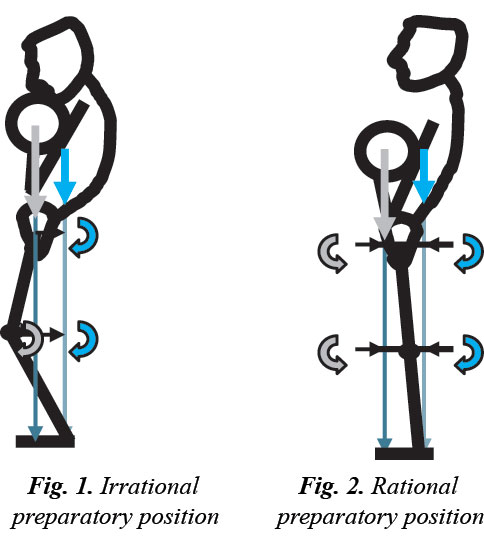
The balance in the knee joints is achieved due to the balance of these two forces. The first one is the kettlebell gravitational force, the projection of which goes in front of the knee joints and is aimed at extension. The second one is the resultant gravitational force of the body and head, the projection of which goes behind the knee joints and is aimed at flexion of legs in these joints. When the moments of these forces are equal, the tension of the quadriceps of a thigh decreases, and when the bending moment of the kettlebell gravitational force exceeds the moment of force of the knee flexion, they are fully relaxed.
Holding the kettlebell handles with thumb pads, as well as elbows fixed on the iliac crests with legs straightened and arm muscles maximally relaxed reduce overexposure of the gravitational forces and the moments of these forces in joints and make motor actions more efficient.
As a rule, weightlifters, who do not pay due regard to development of joint flexibility and necessary mobility, do not achieve any prominent results. Excess tension in the quadriceps of a thigh and body flexors, airflow obstruction in case of the irrational preparatory position before the next clean and jerk limit weightlifters’ capabilities, which is theoretically justified. There are cases in sport science when the maximum physical effect is achieved only if the levels of muscular tension are optimum (i.e. when neither of the muscles reaches its maximum). This can be explained by the fact that the levels of their activity are interrelated and interdependent. That is why excessive increase in the level of activity of any of the muscles leads to the decrease in the activity of the rest of them and to the loss of the common effect of motor actions.
Conclusions.
1. The injuries in kettlebell sport are caused mainly by performance of kettlebell exercises mostly using force. Thus, exercises are performed in the conditions of excess tension in the knee joints and the lumbar spine.
2. Various spine overstrains, injuries of knee joints, strains and muscle sprains at all stages of training should be prevented using the rational compensation of gravity actions and the optimum alternation of the processes of tension and relaxation of muscular groups involved in motor actions when doing kettlebell exercises.
3. The problem of prevention of injuries in kettlebell sport can be settled in case of initially properly mastered technique of performance of competitive exercises.
References
- Kettlebell sport in the system of physical training of servicemen: Study guide for cadets and students of MIPC. 20th ed., rev. and sup. / Gen. ed. by R.M. Baymukhametov. St. Petersburg: MIPC, 2011. – 122 P., ill. (In Russian)
- Gomonov, V.N. Individualization of technical and physical training of weightlifters of various ranks. Abstract of Ph.D. thesis (13.00.04). – Smolensk: SSIPC, 2000. – 26 P. (In Russian)
- Vorotyntsev, A.I. Dumbbells. The sport for strong and healthy. – Moscow: Sovetsky sport, 2002. – 272 P.: illus.
- Matveev, L.P. Theory and methodology of physical education. – Moscow: FIS, 1991. – 543 P.
- The basics of kettlebell sport: learning motor actions and training techniques: study guide. / Gen. ed. by V.F. Tikhonov. Cheboksary: Ul’yanov ChSU, 2009. – 146 P.
Corresponding author: [email protected], [email protected]


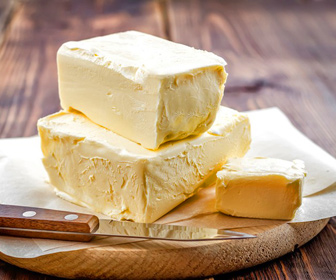
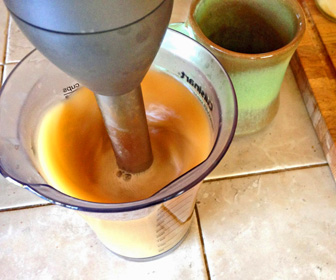
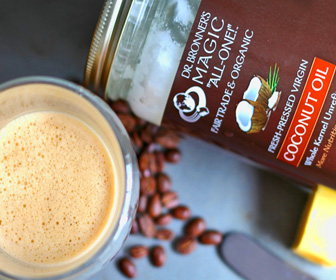


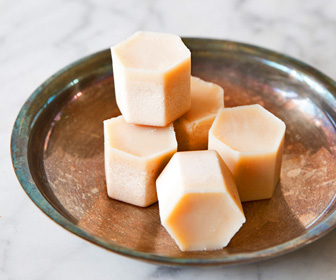


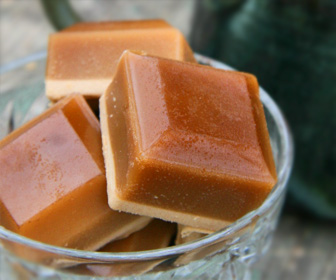






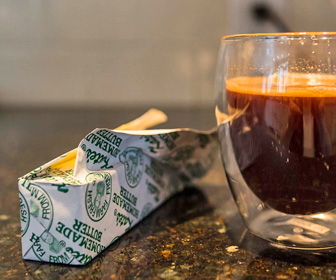


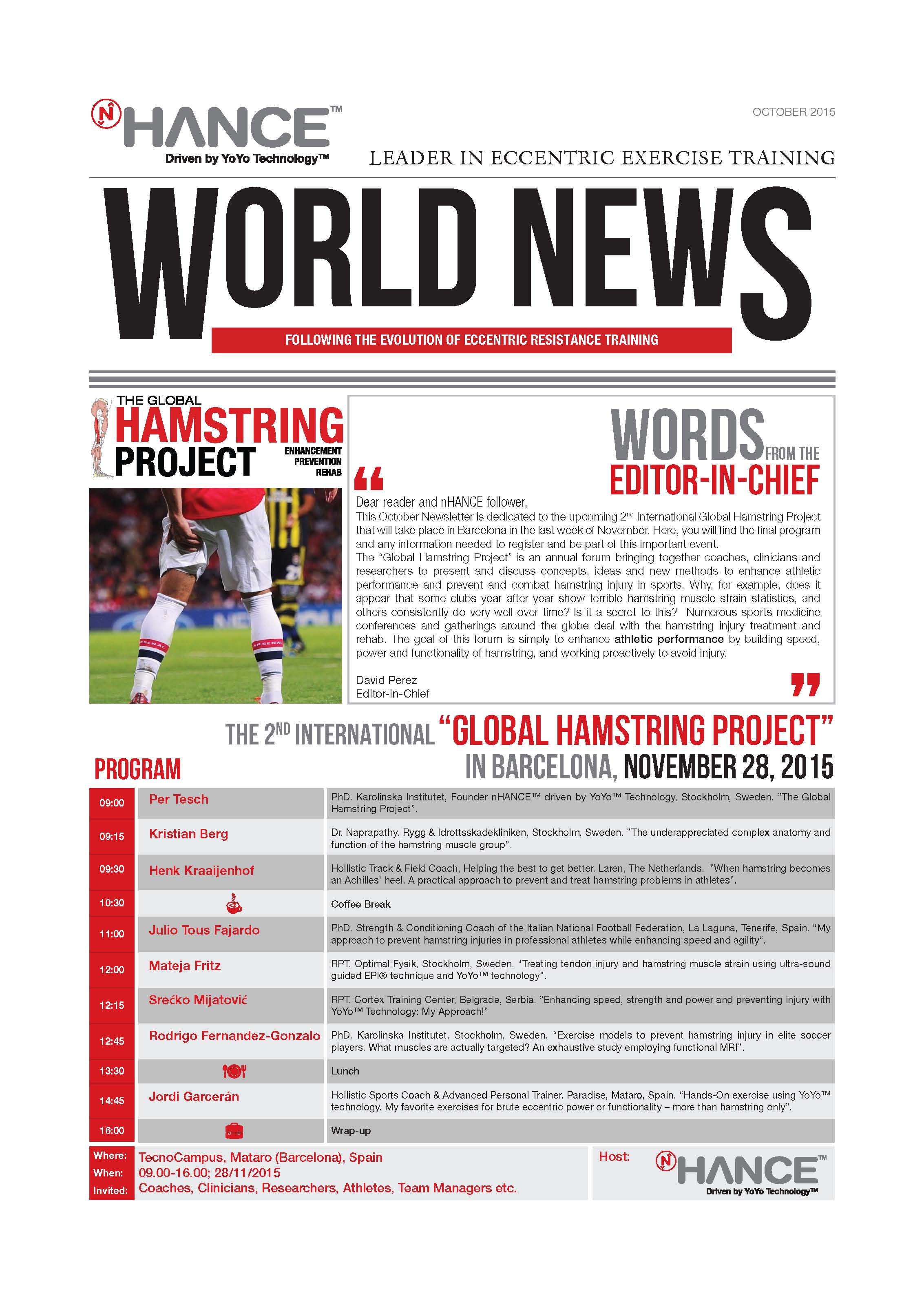
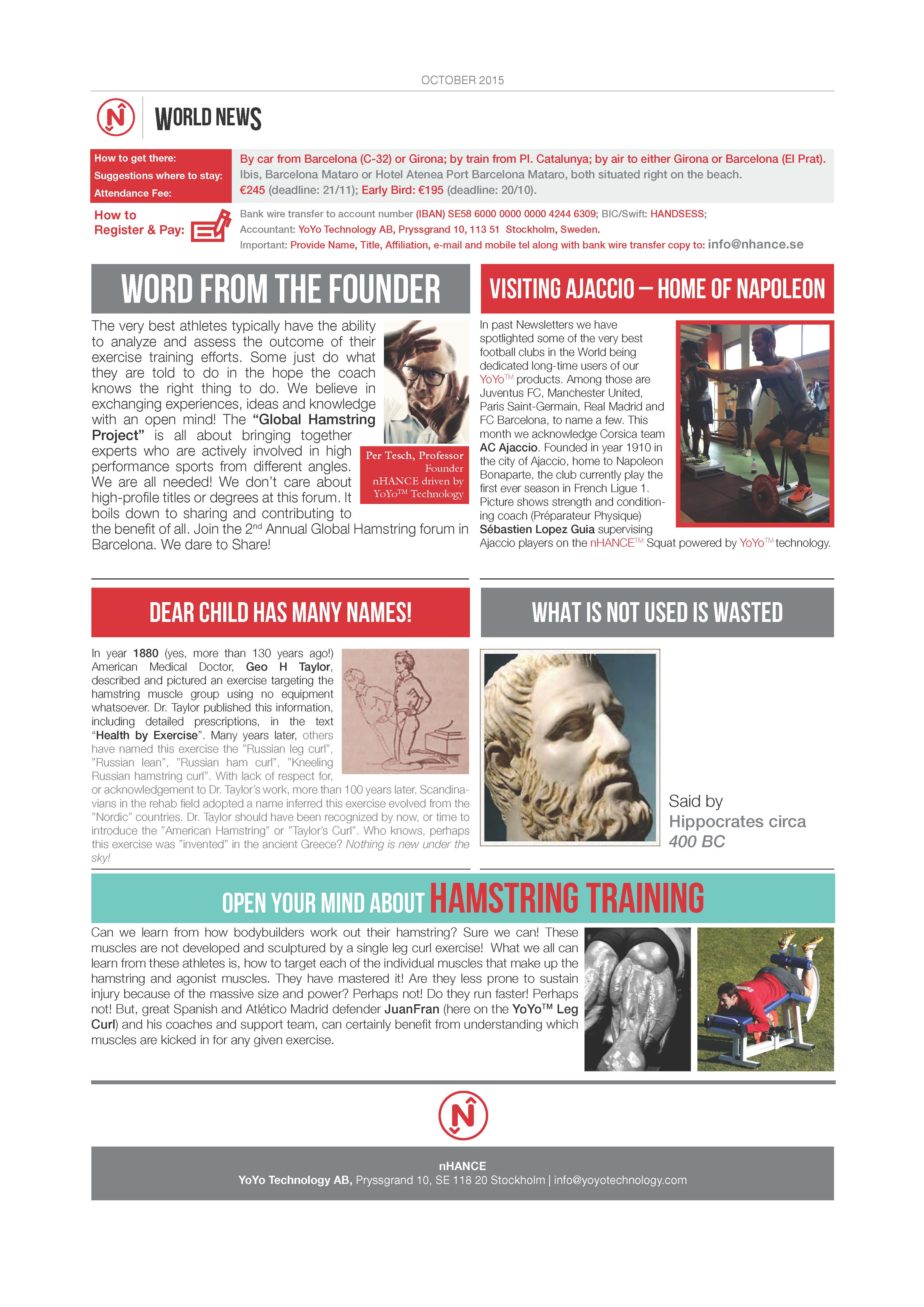


 Location: Östermalmsgatan 13
Location: Östermalmsgatan 13 Phone: +46 (0) 141-478830
Phone: +46 (0) 141-478830 Email:
Email: 





NYA KOMMENTARER
very nice!
posted in Nice & Clean. The best for your blog!from nice
also another nice feedback here, uh uh
posted in Nice & Clean. The best for your blog!from corrado